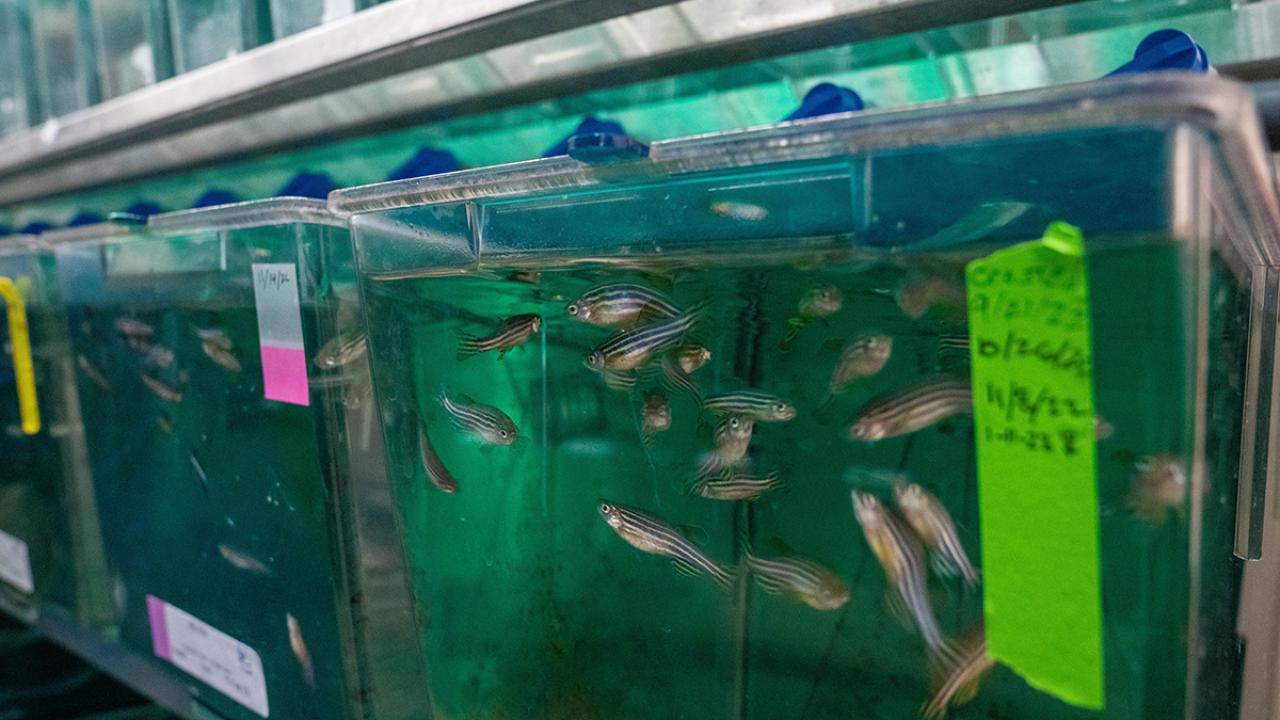
Using Glowing Fish to Detect Harmful Pesticides
Zebrafish genetically modified to produce green and red fluorescent proteins could help identify pesticides which cause birth defects
Birth defects related to chromosomal abnormalities often stem from exposure to chemicals early in the mother’s life. But determining which chemicals are at fault poses a serious challenge — akin to solving a hit-and-run case, decades after the fact. Two College of Biological Sciences researchers, Professor Sean Burgess and Professor Bruce Draper in the Department of Molecular and Cellular Biology (MCB), are developing a method that could identify harmful chemicals far more quickly, with the help of red- and green-glowing zebrafish.
Their work could benefit millions of people in California’s Central Valley, who are at elevated risk for exposure to pesticides because they live or work near agricultural production sites. Pesticide exposure can cause both acute and long-term health problems in humans, including harm to the reproductive system. This harm often occurs because chemicals interfere with sensitive stages of fetal development, during which the cells that will one day produce sperm or oocytes are forming.
Read the full article here.
